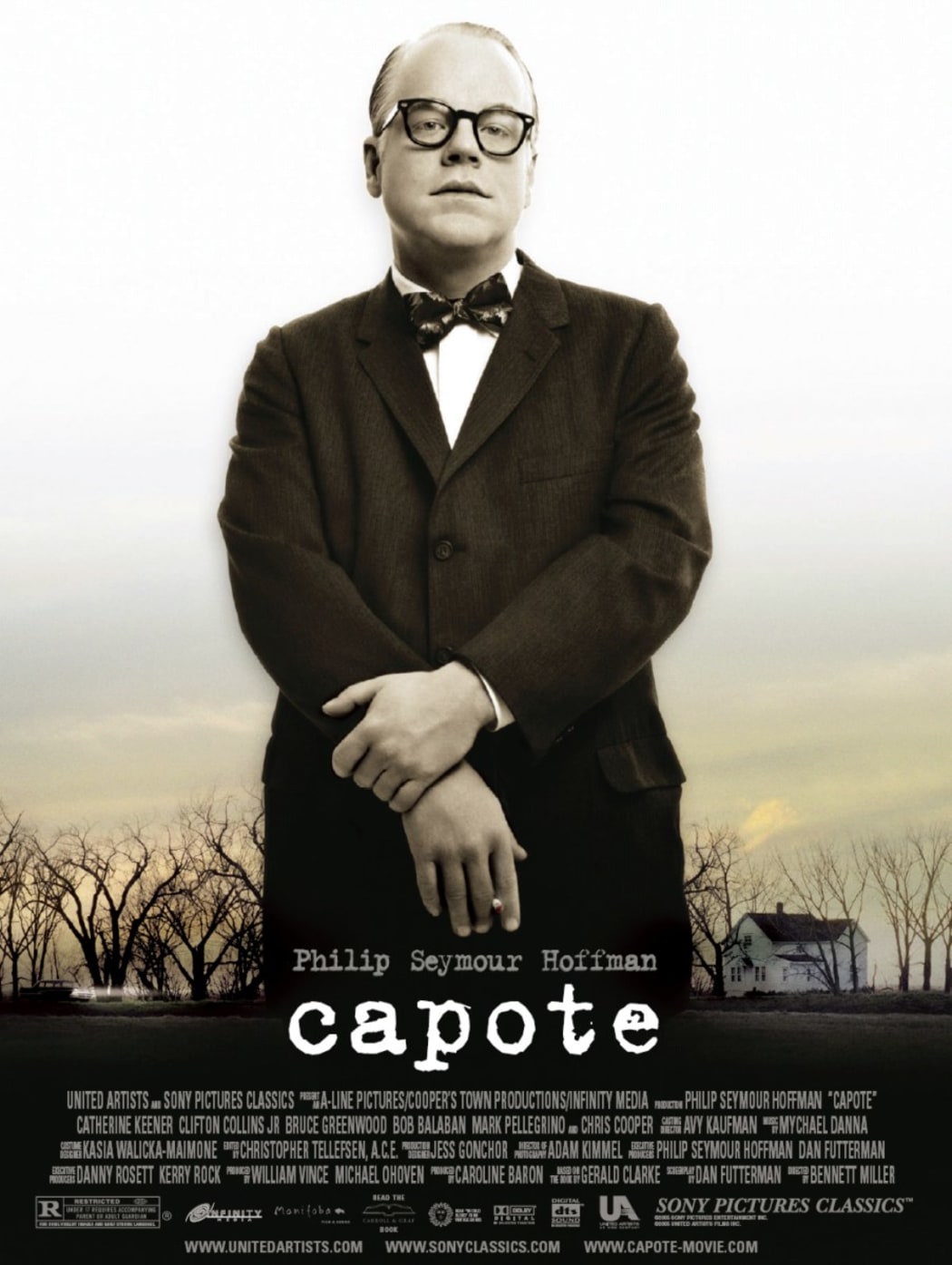For four years, a poster for the DVD release of Capote hung above my bed.
It came into my possession around the middle of 2006. I know it was the middle of 2006 because it didn’t mention the Oscars but the Oscars had happened. I followed them because they told me what films to see. That was a vital service for a 16-year-old cinephile growing up in a small town outside Palmerston North – I didn’t have a driver's license, let alone a car, and relied on my parents to get me to the cinema or Video Ezy.

Photo: Unknown
So I knew about Philip Seymour Hoffman. I knew he’d won Best Actor for the film on the poster. But I hadn’t seen it. Hadn’t had the chance.
I had seen Philip Seymour Hoffman, mind. I’d seen him in The Big Lebowski. I thought he was very funny. And I’d seen him in Cold Mountain. I only remembered how brown the film was.
Because of that, I know part of the reason I had the poster above my bed was because I was a dumb kid trying to make a statement about what I knew. At high school, I made knowing Martin Henderson was in Bride & Prejudice a point of pride. When we did an essay on an auteur for Media Studies, I chose Sam Mendes because everyone else chose Quentin Tarantino. The poster was just another manifestation of my middlebrow snobbishness.
But I always told people I wanted to be like Philip Seymour Hoffman, a man I’d barely seen act. I finally saw him act in 2008, in my first year of university and two years into the poster’s run above my bed.
I saw him in Doubt. I saw him play a charismatic and affable man worn down by a suspicious nun’s relentless assault, and I saw him play it with incredible subtlety, understated pain.
Then I saw him in Synecdoche, New York. I saw him play the centre of an existential horror film, and I saw him weather the hurt the world threw at him as only a tired, anxious, brilliant mind could.
Even though my idolatry was born out of vain ambition, the more I saw him act, the more I wanted to be like him; the more I held him up as a platonic ideal for actors
I saw him in other films after 2008. I saw him in Boogie Nights, playing a nervousness, a desire to be liked that cut well too close to my own experience (though my experience didn’t involve porn sets). I saw him in Magnolia, holding scene after scene with one of America’s finest actors, tapping into an endless reservoir of warmth and empathy. I saw him in The Master, with sly comic timing, incredible presence, a voice and a conviction that made you want to believe in him and in his cause. I saw him in Mission: Impossible 3, in State and Main, in Moneyball, in The Boat That Rocked.
I hadn’t seen any of these in 2006. Instead, I was chasing the idea of Philip Seymour Hoffman – this great aspiration, this dude who looked a bit like me, who told off-kilter stories and was amazing at it. And yet, even though my idolatry was born out of vain ambition, the more I saw him act and the more I learned about him over the years, the more I wanted to be like him; the more I held him up as a platonic ideal for actors, for storytellers. He was a man who always felt his roles deeply, who cared about the stories of others and treated his roles with empathy and an unmatched attention to emotional detail.
I’m no longer the dumb kid I was in 2006, but Philip Seymour Hoffman has never stopped being an inspiration and an aspiration. The world has lost one of its greatest storytellers.

